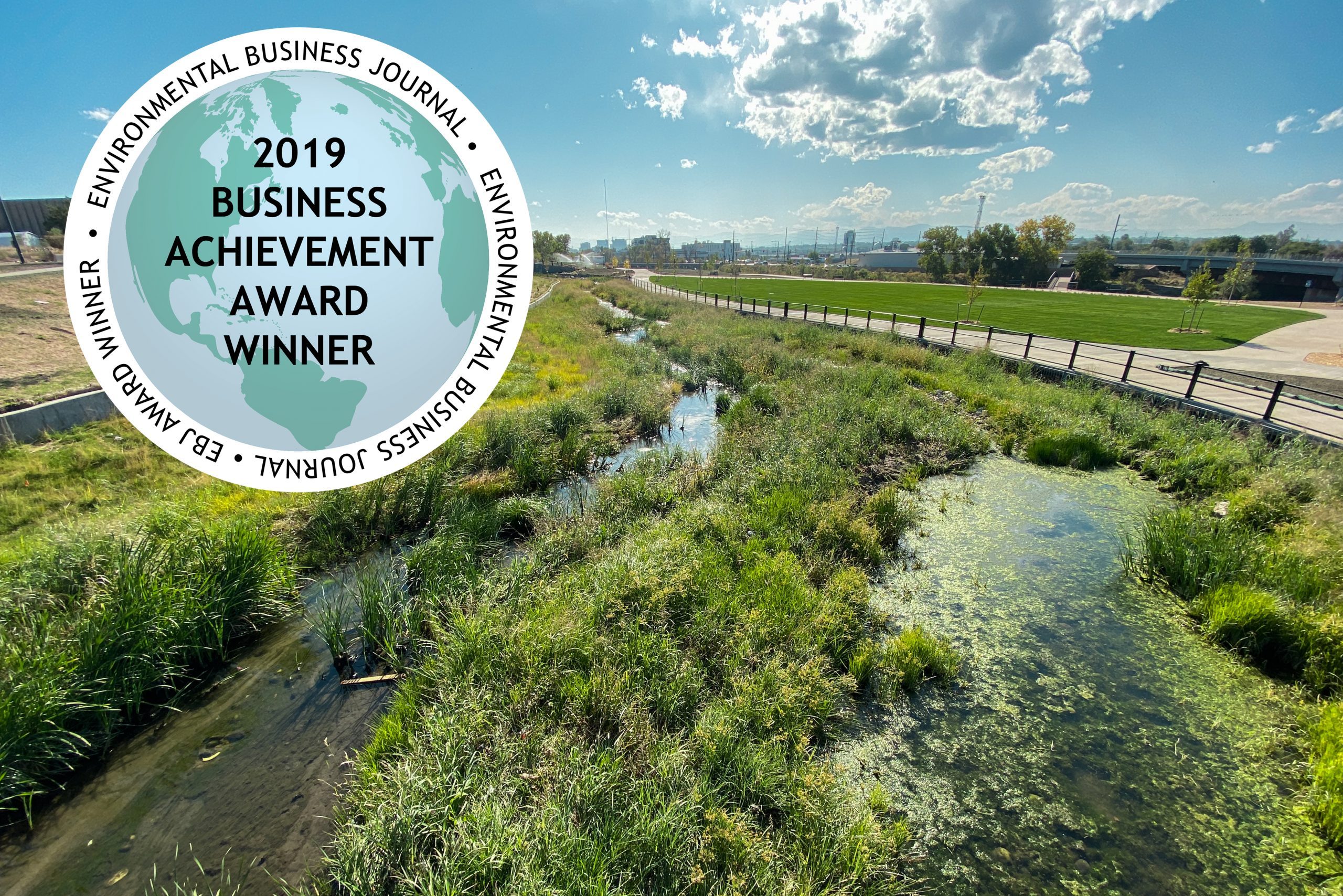
Globeville Landing Ecological Design Wins EBJ Award
January 28, 2020
Eco Endowment Solutions Launches to Manage Financial Endowments for Conservation Lands
February 7, 2020Great Ecology maintains a strategic partnership with Eco Endowment Solutions (EES) for the financial management of endowments for mitigation bankers, conservation land managers, and land trusts. Founded by Great Ecology's founder, Dr. Mark Laska, and Carmel Capital Partners co-founder, Russell Silberstein, Eco Endowment Solutions provides investment management and environmental expertise for environmentally-focused endowments.
The following was written by Eco Endowment Solutions' co-founders Dr. Mark Laska and Russell Silberstein:
Best Practices for Ecological Endowment Management
One of the most challenging and little discussed elements of habitat mitigation and restoration projects is the transition from the project originator (permittee, mitigation banker, or even municipality) to the long-term manager. This transition is rarely thought about in detail until years into the mitigation process and often involves a scramble to implement. The transition is necessitated due to a provision in the Clean Water Act, and its subsequent interpretation, which requires mitigation projects to continue “in perpetuity” or, essentially, forever. Eco Endowment Solutions (EES) was formed to assist in this transition an the ongoing management of the project.
In a typical mitigation project, an entity impacts a natural resource or a wetland. That entity might be a real estate developer engaged in a commercial or residential development project, an industrial or energy company, or even a governmental agency such as a State transit agency. Under a number of federal and state laws, that entity is required to offset the adverse impacts to the natural resource by improving habitat through a mitigation project.
Once the mitigation banker designs a mitigation project for wetland impacts, they receive a wetlands impact permit (called a 404 permit) from the federal government. In addition to the permit a construction bond is required along with approximately five years of monitoring the growth and development of the restored or constructed habitat. If after five years, the mitigation site meets a predetermined “success criteria” – e.g. amount of native plant coverage or diversity of bird species known to occur onsite - then the project is considered a success and the original entity has no further responsibilities.
However, because of the “in perpetuity” provision of the Clean Water Act, the restored land cannot be redeveloped, changed, or altered in any way - it must be maintained as a restored natural habitat. For large mitigation projects and especially for mitigation bankers, the maintenance of the restored land is typically done by a non-profit land trusts or conservation groups dedicated to land management and conservation. At this point of “success” a Long-term Management Plan (LMP) is designed and implemented by the manager, whether that is a land trust or other designee.
This transition can create potential problems for the habitat mitigation project. The designers, owners, and parties responsible for impacts are no longer involved in the project and the designated land trust or conservation group assumes full responsibility for long-term management. This long-term management includes keeping fences intact, invasive species management, and responsive hydrological modifications designed to minimize further habitat impacts due to factors such as climate change.
The manager is responsible for the long-term management of the mitigation property. The capital required to fund this management is generally provided through a contribution by the original mitigation bank sponsor (mitigation banker, project proponent, or government agency). This contribution generally comes in the form of an endowment, or a principal amount of money that generates a return necessary to fund the cost of the long-term management. A well designed financial plan will deliver a return sufficient to cover the cost of the site management without the need to ever utilize the principal (or the original contribution).
For example, the long-term management of a property is estimated to be $30,000/year to implement. Assuming an investment can yield a 3% annual return on invested capital, the manager would need an endowment of $1,000,000. Each year, the endowment would generate the 3% return, $30,000, and the principal capital would remain in place.
This calculation raises several questions - what if the return is better than 3% - say 4%. What happens to the extra $10,000 in earnings or interest that the endowment generates? Alternatively, what if there is poor market performance and the endowment only earns 2% over the course of a year, and now the manager is $10,000 under its required financial requirements for proper implementation of the plan?
It’s prudent in years the endowment performs above expectations, to take the surplus earnings and put it back in the principal account, which grows the endowment, setting a higher basis for future earnings. That way, when the rainy day arrives—and we all know it will—there will be capital to support long-term management.
If the returns on the endowment under perform, there might not be excess capital. In this case, the manager has several options:
-
Defer elements of the long-term management plan—perhaps a fence doesn’t get repaired this year or non-native species are allowed to spread;
-
Raise capital from other sources. Many land trusts rely on a certain level of donor-funded financial inputs and the land trust can try to fundraise to cover shortfalls; and
-
Borrow from the principal against future earnings.
Each of these alternatives involve risks. For instance, if critical management elements are temporarily deferred, they can become more expensive to manage or adversely impact the performance of the habitat. Raising capital places pressure on donors. Borrowing against the principal capital of the endowment creates pressure on future performance, may require regulatory approval, and can compromise the long-term ability of the manager to be successful.
Who decides the amount of money that should go into an endowment? Typically, the mitigation banker or project proponent creates a long-term management plan that is approved by regulators. The mitigation banker or project proponent makes an educated guess at how much the implementation of a long-term management plan will cost. Based on this guess, they back into an estimate of how much capital should go into the endowment based on yet another estimate—this one about the financial performance of the endowment. In our opinion—that is a lot of guesswork!
Making the situation even more confusing, the manager is required, under a variety of state and federal laws governing non-profits as well as state and federal tax agencies, to submit annual reports showing financially prudent management and tax returns. So after a lot of guesswork, the manager becomes financially and environmentally liable for implementation of the long-term management plan—even if it is not involved in its development. The manager must then report on the results under numerous tax, financial, and environmental laws to a range of regulators.
A few entities have created a cost estimating framework to assist in projecting the long-term cost of the LMP. Both the PAR analysis or a model by The Nature Conservancy have proved useful in these projections. These are both generally good starting points to understand the complexities and nuances of long-term management finances. The best case scenarios occur when the long-term manager is brought into the project at an early stage so they can provide insight into realistic management plans and costs.
A final question is who manages the endowment? In some cases the designees manage the money themselves - some designees are fortunate to have board members or access to investment expertise. In other cases, the manager simply hands over capital to a large financial institution and hopes for good return. These banks often just plug the designee into their existing investment programs, which gives the managers access to a few mutual funds to diversify risk and try to maintain a predictable return. In California, land trusts and other designees are encouraged (if not directed by regulators) to invest via community foundations and government-created entities. While these entities are typically successful in managing capital, each has specific formulas and pros and cons. Outside of California, there are typically fewer guidelines for the designee.
Eco Endowment Solutions (EES) was formed to provide another alternative to endowment management. We create a customized investment portfolio of assets that strives to produce the necessary returns and accounts for unforeseen fluctuations over time such as inflation, and unexpected management crises that need immediate response. EES is a division of Carmel Capital Partners, LLC, an SEC registered investment management firm with 20 years of investment management experience.
Contact EES to see how we can help you with the transition and manage your conservation properties.
Authors: Dr. Mark Laska & Russell Silberstein

